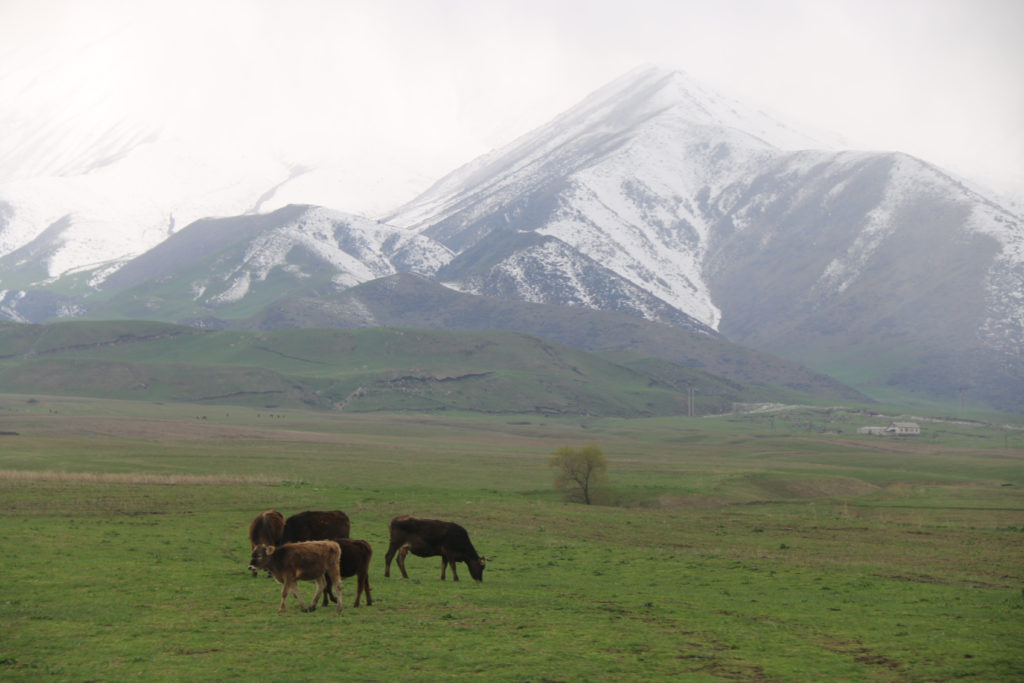
Investigating bovine pulmonary hypertension (BPH) has become a very important part of Integrated Livestock Management activities over recent years. It is historically important because the disease known as high mountain disease (HMD or brisket disease) was first discovered and pursued as a disease of high mountain cattle a hundred years ago here at Colorado State University by researchers doing exactly what our program does today – pursuing answers to problems of cattle producers.
Some of the factors that cause the problem were identified decades ago, outreach education was provided across the Rocky Mountain region, field testing was implemented, and many producers saw good results in their efforts to combat the problem. The disease was known as high mountain disease because of its occurrence in cattle about 7,000 ft altitude. Most producers outside the Rocky Mountain region have hardly even heard of the problem.
But the problem of pulmonary hypertension has proven to be more complicated than originally thought. Producers with cattle at high altitudes still see losses associated with low oxygen environments even though many of the cattle do not show classical signs of high mountain disease. Additionally, the disease known as brisket disease or right heart failure has also increased in cattle at much lower altitudes, particularly in high plains feedlots. It has become clear that there are numerous causes of BPH.
Our first project was a field investigation of high rates of beef calf death losses in high mountain herds where owners had followed testing and breeding recommendations for decades and still had high calf losses. They identified the problem as “summer pneumonia” and did not think it was classical high mountain disease but did not know how to control it. Our investigations showed it was a combination of infectious and disease and BPH.
For an overview of the problem and the direction of our efforts, here are two articles from recent issues of Bovine Veterinarian and a manuscript from a symposium:
- Bovine Pulmonary Hypertension – 100 Years of Heartache
- High-altitude disease or high-production disease
- Neary Range Beef Cow Symposium
We realized the problem of BPH was more insidious and widespread than had been realized, and that the current testing programs have not eliminated the disease and that more research was necessary to better define the problem. New testing methodologies in addition to PAP testing have helped in our investigations.
We have used new methodologies to reconsider how calves respond to high altitude rearing. Here are 3 manuscripts with our findings:
- Angus calves born and raised at high altitude
- Open Access Journal of Animal Physiology
- Static and dynamic components of right ventricular afterload are negatively associated with calf survival at high altitude<
We evaluated cattle as they move from cow/calf ranches through feedlots to finishing. We looked at the effects of high altitude rearing on subsequent physiologic changes in the cardiopulmonary system.
We looked at the occurrence of right heart failure, the key sign of BPH, in feedlot cattle at different altitudes well below the traditional definition of “high altitude.” We now work with seedstock, cow/calf, and feedlot producers using physiologic testing, epidemiologic methods, and new genetic tools to investigate the disease and provide new answers to an old problem. We are also collaborating with colleagues in human medicine, because the same disease affects many humans, both young and old.
We are evaluating some of the genetic features of BPH.
We considered differences between cattle and yak genetic composition and tested DNA collection methods to facilitate future comparisons because yaks are not prone to BPH and HMD.
We also noted that some dairy cattle are affected by right heart failure and have pursued testing of dairy animals and the impact of blood oxygenation differences in young dairy cattle.
We continue collaborating on the genetic and pathologic features of this complex disease problem and are focusing more on distinguishing between the effects of high altitude (alveolar hypoxia) compared with rapid weight gain, fattening cattle and metabolic/pathophysiologic influences on the problem. Here are several reports of our recent efforts:
- Genetics of Brisket Disease in Beef Cattle: A not so High Altitude Problem
- High Energy Rotation Feeding in Steers at Low Elevation: A Natural Animal Model of Irreversible Pulmonary Hypertension, Pulmonary Arterio-Venous Remodeling, and Heart Failure
- Natural History of Pulmonary Hypertension: Adaptive versus Maladaptive Physiologic Responses in Beef Cattle Exposed to Chronic Hypoxia
- Angus Cattle at High Altitude: Genetic Relationships and Initial Genome-Wide Association Analyses of Pulmonary Arterial Pressure
- Mean Pulmonary Arterial Pressure in Beef Calves is Positively Associated with Mixed Venus CO2 Tension and Oxygen Extraction Ratio when Controlling for Alveolar Oxygen Tension
- Aveolar-Arterial Oxygen Pressure Gradient of Pre-Weaned Beef Calves is Negatively Associated with the Cross-Sectional Area of the Longissimus Dorsi Muscle
- Gemetoc Correlation of Genome Wide Association Study of Pulmonary Arterial Pressure and Post Weaning Growth Traits in Angus Heifers from a High Altitude Breeding Program